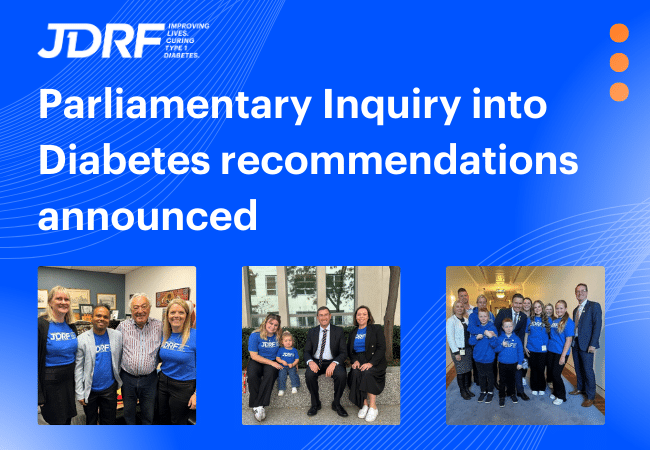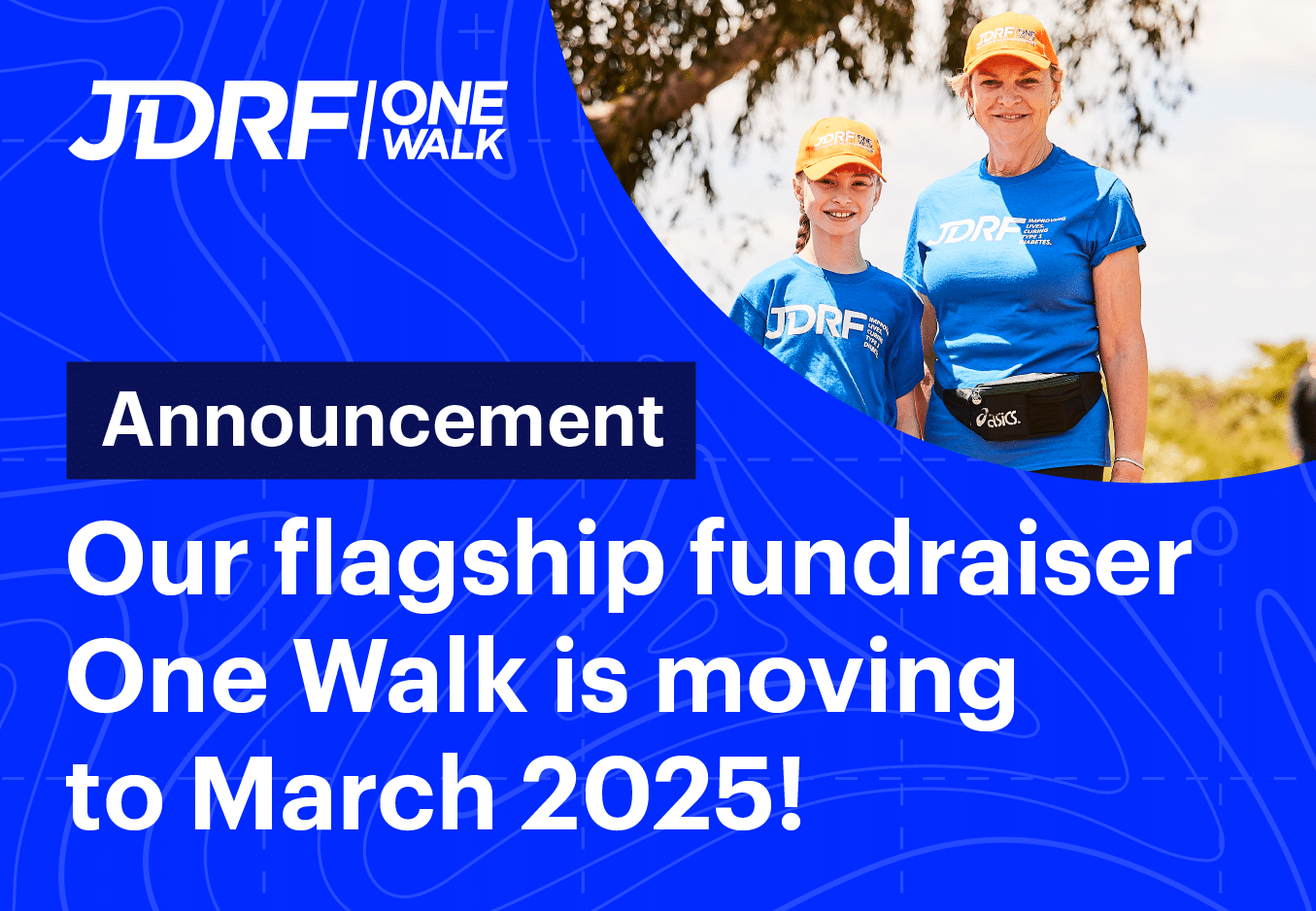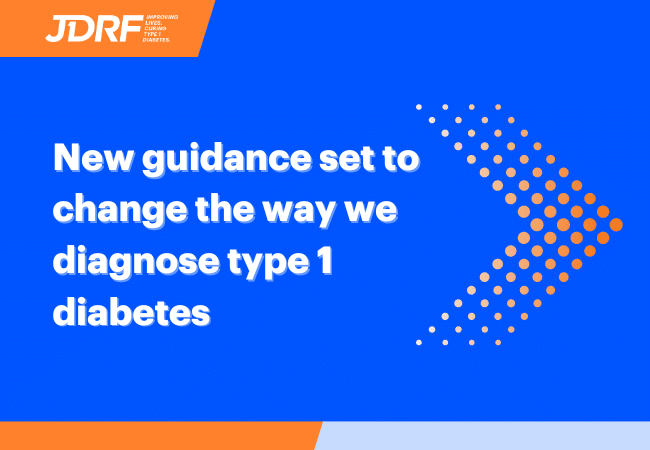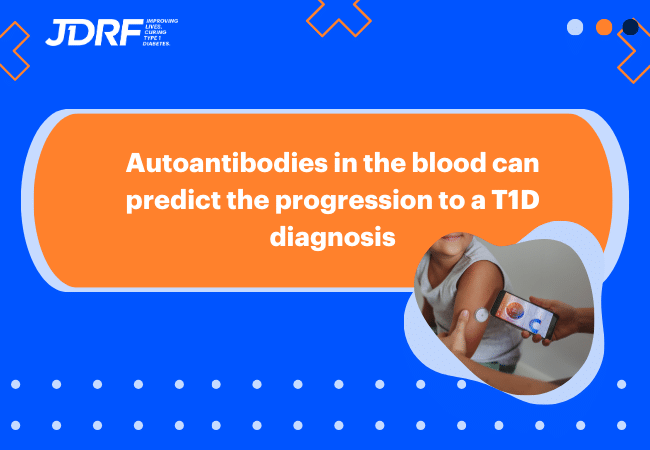Type 1 diabetes and alcohol: A guide to managing T1D on a night out
When planning a night out, there’s often lots to think about. What will I wear? How will I get home? Who will rescue me if I get stuck talking to someone boring? Did I pack my wallet, keys and phone? For people living with T1D, it’s no different – but just requires a little extra thought and planning as managing type 1 diabetes and alcohol can be tricky.
How does alcohol affect type 1 diabetes?
In Australia, guidelines on the level of alcohol consumption for people with type 1 diabetes are the same as that for the general population (2 standard drinks for men and 1 standard drink for women). However, we’re human and occasionally would like to go above this limit!
Moderate amounts of alcohol may cause blood glucose levels to rise, while excess alcohol can decrease your blood glucose levels. This can be dangerous for people living with T1D due to increased risk of hypoglycaemia (a ‘hypo’).
So if you’re planning a big night out, here’s a guide to keep your T1D in check.
Planning your night
In addition to wallet, keys and phone – let’s add some extra essentials into your bag to ensure you have what you need to manage T1D throughout the night:
- blood glucose meter and strips
- hypo kit
- insulin.
On the night
When dancing and being more active on a night out, it can be easy to have a hypo. On the other hand, consuming sugary drinks and other carbs can cause blood glucose levels to easily spike. It’s important to regularly check your blood glucose levels throughout the night to keep track of these fluctuations and manage your T1D accordingly.
However, despite being properly prepared and keeping track of what’s happening in your body, it can still be easy to slip up when having a couple of drinks. It can be useful to have a friend to help look out for you. This especially applies when it comes to hypos. Make sure at least one friend is aware of your T1D and knows the signs of a hypo and how to treat one if needed.
What can I drink with type 1 diabetes?
In general, alcohol often results in a drop in blood sugar levels. However, sugars which are already included in your drinks can increase it. Make sure you keep track of the amount of carbs in your drinks throughout your night. Here is a table of some popular drinks with their carb count (make sure you check the label of your drinks for more accurate measurements):
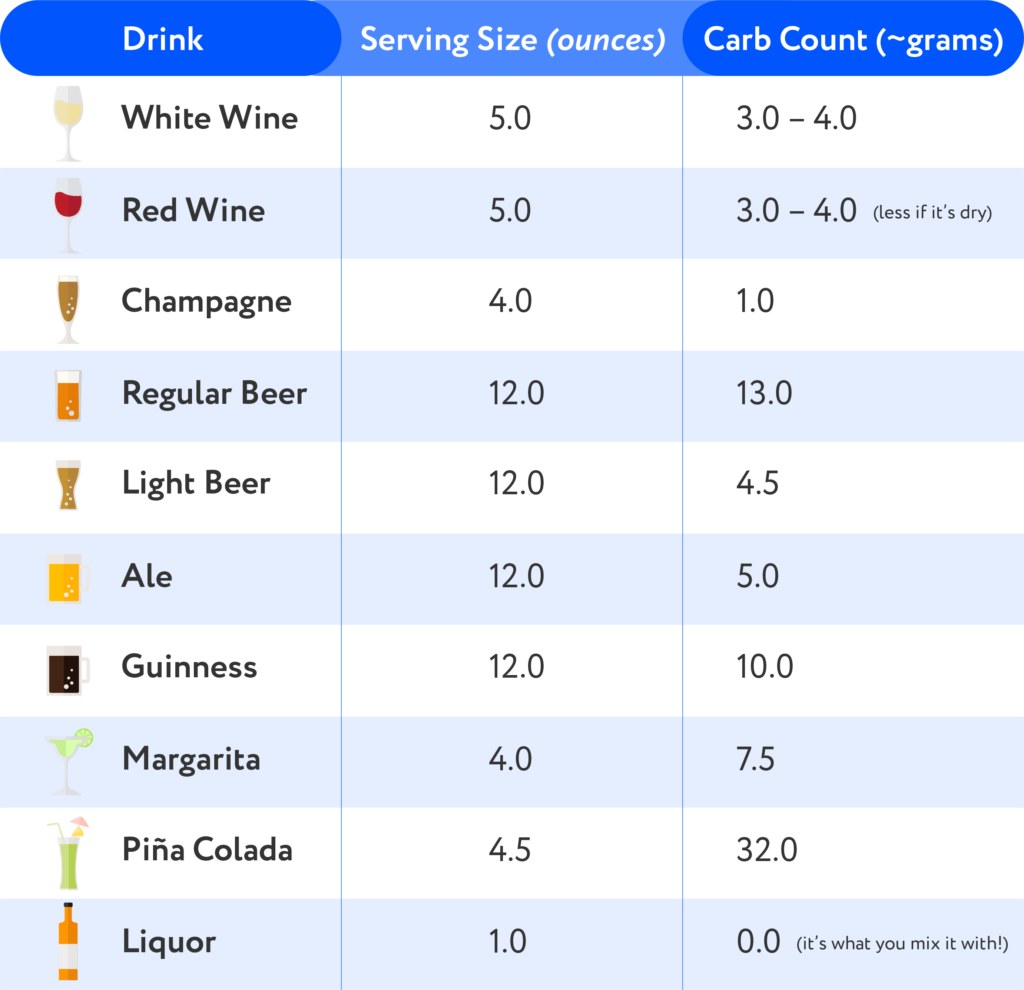
It’s important to note that blood glucose levels can often rise too high after drinking alcoholic beverages which contain carbs, such as regular soft drinks or sweetened liqueurs. A good tip is to try choose a diet soft drink as a mixer where possible. Here’s an example of the carb amount in a liquor mixed with a regular soft drink vs a diet soft drink.

Alcohol & hypoglycaemia
While consuming alcohol increases risk of a hypo, there are ways to reduce this risk. Some strategies include:
- Eat some carbs at the beginning of your night – preferably a snack containing 2-3 exchanges of carbohydrate
- Eat carbs every couple of hours while drinking and before bed
- If you have previously experienced low blood glucose levels overnight, consider reducing your evening dose of insulin 20%-30% (especially if you are planning on a very active night like dancing or if you’ve played sport that day)
- Make sure you consult your diabetes team before making these changes
Read more on why alcohol can cause a hypo.
The morning after
The morning after a night out can be challenging for anyone, but especially for those needing to manage their blood sugar. Delaying or missing your morning insulin after a night out can cause your blood glucose levels to spike up. To avoid this, set your alarm clock to wake you within an hour or so of your usual waking time. If you are hung over and don’t feel like eating, take your normal or a slightly reduced dose of your intermediate or long-acting insulin and go back to bed.
If you are vomiting from overindulging, you should treat this like any other occasion of vomiting and keep a close watch on your blood glucose levels and ketones.
These are a couple of tips to help you manage your type 1 diabetes while drinking alcohol on a night out. So go enjoy that wine with friends, or cold beers on a sunny afternoon knowing you’re well prepared!
For more tips on managing T1D, download our FREE ‘Straight To The Point’ T1D guide for adults.

